As technology advances, artificial intelligence has become increasingly prevalent in our daily lives. One of the most popular forms of AI is conversational AI, which allows users to engage in natural language conversations with a machine. Chat-GPT is a conversational AI tool that has gained popularity recently. If you’re using Chat-GPT, you know that prompts are crucial to its functionality. In this article, we’ll explore the prompts for Chat-GPT to help you get the most out of your conversational AI tool.
1: What are prompts, and why are they important?
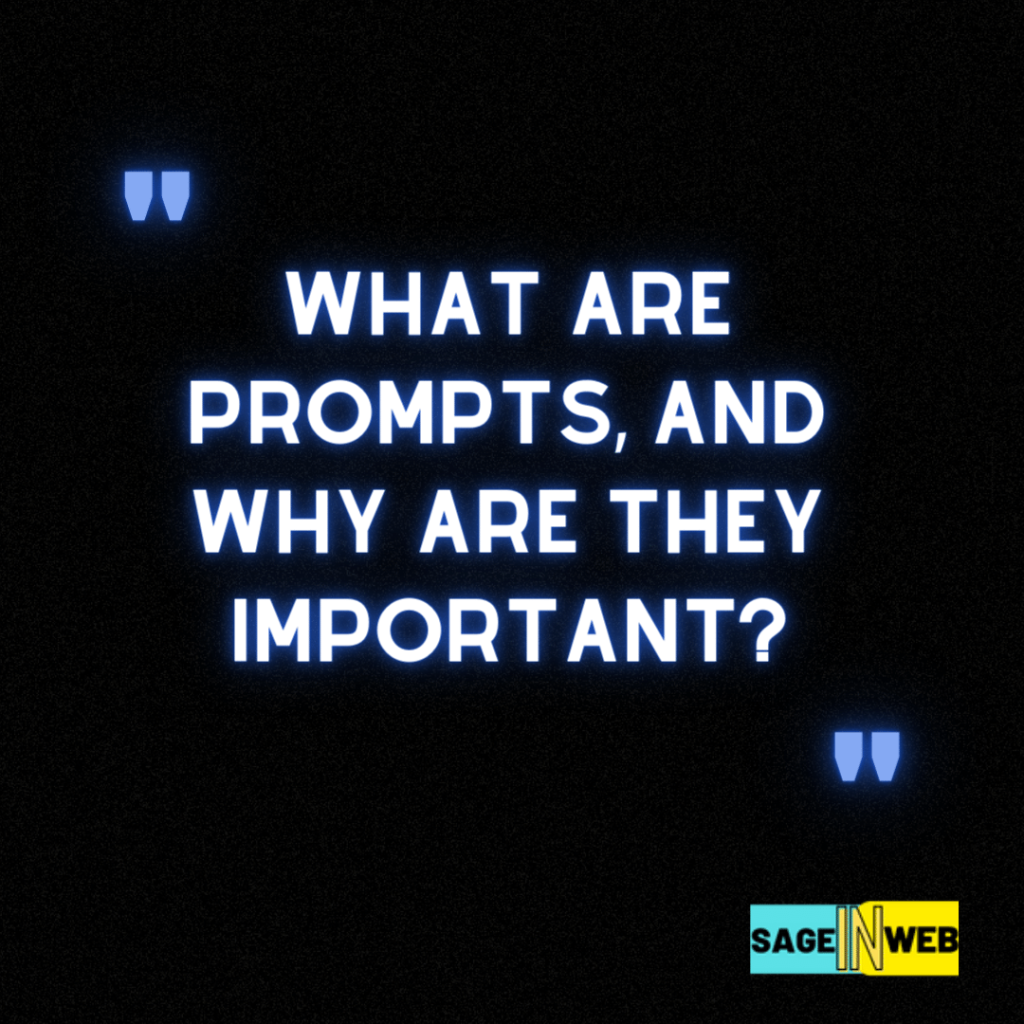
Prompts are messages or questions designed to initiate a conversation or prompt a response from a user. In the context of Chat-GPT, prompts are essential because they guide the conversation and help the AI understand what the user is trying to say. Without prompts, the conversation can quickly become disjointed and difficult to understand.
1.1: Types of prompts
There are different types of prompts that you can use with Chat-GPT. Some of the most common types include:
- Open-ended prompts: These are prompts that encourage the user to provide detailed responses. For example, “Tell me about your day.”
- Closed-ended prompts: These require a specific response from the user, such as “Yes” or “No.”
- Clarifying prompts: These are prompts that seek to clarify something that the user has said. For example, “Can you tell me more about that?”
- Follow-up prompts: These are prompts that build on the previous response from the user. For example, “That’s interesting. Can you tell me more about how you feel about that?”
1.2: Importance of using the right prompts
Using the right prompts is crucial because it ensures the conversation stays on track and the AI can understand what the user says. If the wrong prompts are used, the conversation can quickly become confusing, and the AI may struggle to provide helpful responses.
2: Understanding Prompts
Now that we’ve covered what prompts are and why they’re important, let’s explore some of the best prompts for Chat-GPT.
2.1: Introduction prompts

The first type of prompt you’ll want to use is an introduction prompt. This type of prompt is designed to initiate the conversation and introduce the topic.
For example, “Hi, how can I assist you today?” or “What can I help you with?”
2.2: Open-ended prompts

Open-ended prompts are a great way for the user to provide detailed responses. They allow the AI to understand the user’s perspective and provide more personalized responses. Some examples of open-ended prompts include:
- “Can you tell me more about that?”
- “What do you think about this topic?”
- “How do you feel about that?”
2.3: Closed-ended prompts

Closed-ended prompts are useful for getting a specific response from the user. They can be particularly useful when trying to gather information quickly. Examples of closed-ended prompts include:
- “Yes” or “No” questions
- Questions that ask for a specific piece of information, such as “What is your name?”
2.4: Clarifying prompts
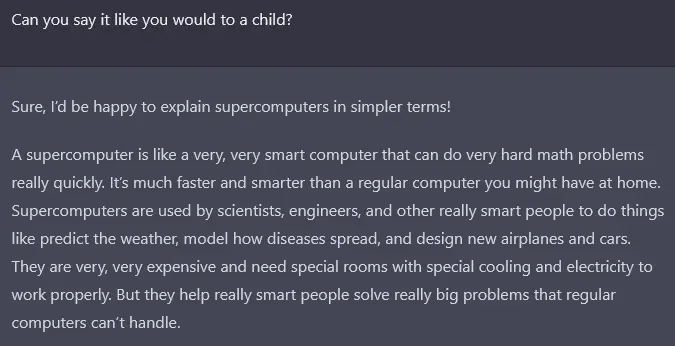
Clarifying prompts is essential when the user’s response is unclear or ambiguous. They help ensure that the AI understands what the user is saying and can respond appropriately. Examples of clarifying prompts include:
- “I’m not sure I understand. Can you explain that to me?”
- “Can you give me an example?”
2.5: Follow-up prompts
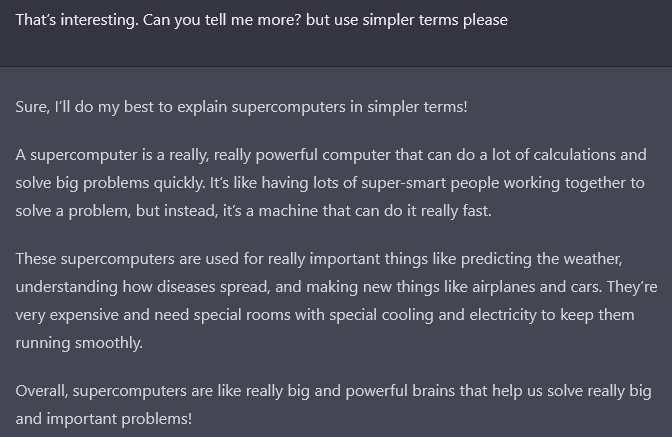
Follow-up prompts are a great way to build on the user’s previous response and keep the conversation going. They can help to elicit more information and provide a more personalized experience for the user. Examples of follow-up prompts include:
- “That’s interesting. Can you tell me more?”
- “How did that make you feel?”
- “What do you think should be done about this issue?”
2.6: Empathy prompts

Empathy prompts are prompts that show empathy towards the user and their situation. They can be particularly useful when the user expresses negative emotions or frustrations. Examples of empathy prompts include:
- “I’m sorry to hear that.”
- “That sounds frustrating. Let’s see if we can find a solution together.”
- “I can understand why you feel that way.”
2.7: Probing prompts
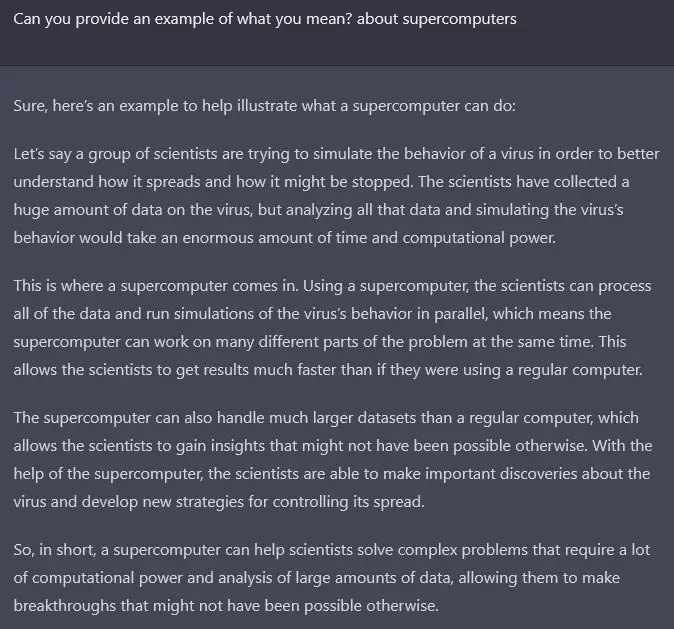
Probing prompts encourage the user to provide more information or go into more detail. They can be particularly useful when gathering more information about a specific topic. Examples of probing prompts include:
- “Can you tell me more about that?”
- “What led you to that conclusion?”
- “Can you provide an example of what you mean?”
2.8: Action-oriented prompts
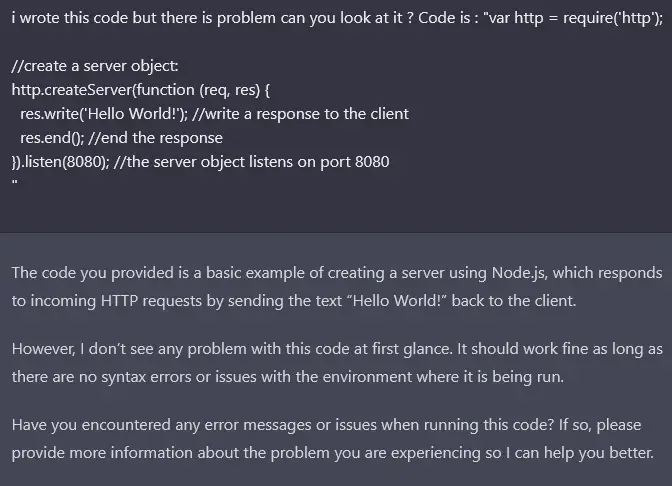
Action-oriented prompts are prompts that encourage the user to take a specific action. They can be particularly useful when guiding the user toward a specific goal or outcome. Examples of action-oriented prompts include:
- “Let’s take a look at some options.”
- “What do you think we should do next?”
- “How can I assist you in achieving your goal?”
2.9: Recap prompts

Recap prompts are prompts that summarize the conversation up to a particular point. They can be particularly useful when ensuring that both the user and the AI are on the same page. Examples of recap prompts include:
- “Let me make sure I understand. You’re saying that…”
- “So, to recap, you’re looking for…”
- “If I understand correctly, you’re saying that…”
2.10: Closing prompts

Closing prompts are prompts that signal the end of the conversation. They can be particularly useful when the user’s issue has been resolved or when it’s time to move on to another topic. Examples of closing prompts include:
- “Thank you for speaking with me today.”
- “Is there anything else I can assist you with?”
- “Have a great day!”
3: Prompts for Chat-GPT
Now that we have a better understanding of what Chat-GPT is, let’s take a look at some of the prompts that you can use to get the most out of this tool.
3.1: Customer Support
One of the most popular applications of Chat-GPT is in customer support. By using Chat-GPT, businesses can provide 24/7 support to their customers without the need for human intervention. Some of the best prompts for customer support include:
- Can you help me with [specific issue]?
- I have a question about [product/service]?
- How do I [perform a specific action]?
3.2: Virtual Assistants
Another popular application of Chat-GPT is in virtual assistants. Virtual assistants can help individuals with a wide range of tasks, including scheduling appointments, sending emails, and even ordering food. Some of the best prompts for virtual assistants include:
- Can you schedule a meeting with [person]?
- Can you send an email to [person]?
- Can you order [food] from [restaurant]?
3.3: Chatbots
Chatbots are another popular application of Chat-GPT. Chatbots can be used to automate conversations with customers and provide quick responses to their questions. Some of the best prompts for chatbots include:
- How can I help you today?
- What can I assist you with?
- Do you have any questions?
4: Examples of Prompts
Now that we have discussed some of the prompts for Chat-GPT, let’s take a look at some examples of how these prompts can be used in real-life situations.
4.1: Customer Support Example
Example 1:
- Customer: Hi, I’m having trouble logging into my account. Can you help me?
- Chat-GPT: Sure, I’d be happy to help. Can you please provide me with your email address and I’ll take a look?
- Customer: [email protected]
- Chat-GPT: Thanks for that. Let me take a look and see what the issue is.
Example 2:
- Customer: Hi, I received a damaged product. What should I do?
- Chat-GPT: I’m sorry to hear that. Can you please provide me with your order number so I can look into this for you?
- Customer: My order number is 123456789.
- Chat-GPT: Thanks for that. Let me take a look and see what we can do to help.
4.2: Virtual Assistants Example
Example 1:
- User: Hey, can you schedule a meeting with John for tomorrow at 2 PM?
- Chat-GPT: Sure thing. What is the topic of the meeting?
- User: We need to discuss the progress on the project.
- Chat-GPT: Got it. The meeting with John is scheduled for tomorrow at 2 PM, and the topic is to discuss the progress on the project. Is there anything else I can help you with?
Example 2:
- User: Can you send an email to my boss and let him know that I’m sick today?
- Chat-GPT: Of course. What is your boss’s email address?
- User: [email protected]
- Chat-GPT: Thanks for that. What would you like me to include in the email?
- User: Just let him know that I’m sick and won’t be able to make it to work today.
- Chat-GPT: Sure thing. I’ll send an email to your boss letting him know that you’re sick and won’t be able to make it to work today.
4.3: Chatbots Example
Example 1:
- Chat-GPT: Hi there, how can I assist you today?
- User: I’m looking to book a hotel room.
- Chat-GPT: Great! What is your destination and when would you like to check-in?
- User: I’m going to New York next month and I’d like to check-in on the 10th.
- Chat-GPT: Perfect. Let me search for available hotels in New York for the 10th. Would you like me to send you a list of options?
Example 2:
- Chat-GPT: Hello, do you have any questions?
- User: What are your store hours?
- Chat-GPT: Our store hours are Monday to Friday from 9 AM to 6 PM, and on Saturdays from 10 AM to 4 PM. Is there anything else I can help you with?
5: Datasets for Chat-GPT
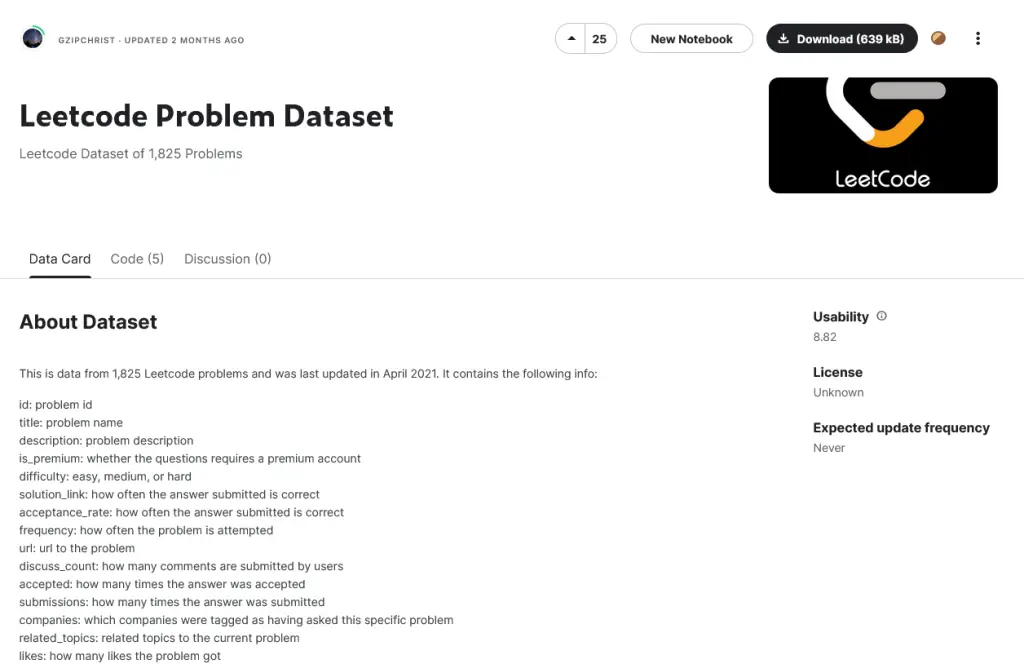
To train a conversational AI tool like Chat-GPT, you need a large dataset of real-world conversations to learn from. There are several publicly available datasets that you can use to train your Chat-GPT model.
One such dataset is the Cornell Movie Dialogs Corpus, which contains over 220,579 conversational exchanges between characters in movie scripts. This dataset is commonly used to train generative conversational models like Chat-GPT because it provides diverse conversational styles and topics.
Another popular dataset is the Persona-Chat dataset, which consists of over 7,000 dialogues between two people who have been given a specific persona to adopt. This dataset is useful for training models that can generate responses tailored to a specific individual’s personality and interests.
Other datasets for training Chat-GPT include Twitter conversations, customer service chat logs, and online forum discussions. Each dataset has unique characteristics and can be used to train models for specific use cases.
When training a Chat-GPT model, it’s important to use a diverse range of conversation data to ensure that the model can handle a variety of conversational styles and topics. It’s also important to clean and preprocess the data to remove any irrelevant or sensitive information that could impact the quality of the generated responses.
6: Conclusion
In conclusion, prompts are a crucial component of Chat-GPT’s functionality. Using the right prompts can ensure that the conversation stays on track, and the AI can provide helpful responses. In this article, we’ve explored some of the prompts for Chat-GPT, including introduction prompts, open-ended prompts, closed-ended prompts, clarifying prompts, follow-up prompts, empathy prompts, probing prompts, action-oriented prompts, recap prompts, and closing prompts. Using these prompts lets you get the most out of your conversational AI tool and provide a more personalized experience for your users.
7: FAQs
How do I know which type of prompt to use?
The type of prompt you use will depend on the situation and the information you’re trying to gather. If you’re looking for more detailed information, open-ended prompts may be best. If you need a specific piece of information, closed-ended prompts may be more appropriate.
Can I customize the prompts in Chat-GPT?
Yes, many conversational AI tools, including Chat-GPT, allow you to customize prompts to fit your specific needs.
Do I need to use all of the different types of prompts?
No, you don’t necessarily need to use all of the different types of prompts in every conversation. It’s important to use the prompts that are most relevant to the situation and the user’s needs.
Can prompts be used in different languages?
Yes, prompts can be customized and translated into different languages to provide a more personalized experience for users who speak different languages.
How do I measure the effectiveness of prompts?
The effectiveness of prompts can be measured by analyzing the conversation data, such as the number of user responses and the quality of those responses. By monitoring and analyzing this data, you can make adjustments to the prompts to improve their effectiveness.
In summary, prompts are a critical component of conversational AI tools like Chat-GPT. By using the right prompts, you can guide the conversation and provide a more personalized experience for your users. By understanding the different types of prompts available and their respective uses, you can tailor your approach to meet the specific needs of your users and achieve your conversational goals.



Comments